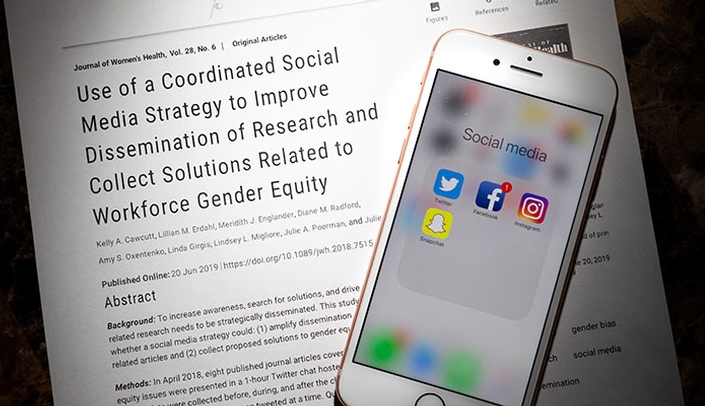Clinicians and scientists are often urged to take advantage of the vast potential of social media for sharing their work, connecting with colleagues, even advancing their careers.
So, you dutifully sign up for Twitter, bravely launch your first tweet, and . . .
One like.
Thanks, Mom.
(Ha, just kidding. Your mom isn’t on Twitter. She’s on Facebook.)
But really: how does someone just starting out grow an audience? How do you turn your (very important) posts into more than just a Grand Canyon hellooooooooooooo?
First, said Aurelie Villard, social media manager for UNMC, don’t give up after one or two posts. Be persistent.
Second, don’t be self-conscious about being a self-promoter. “It’s not going to come off that way,” Villard said.
“Let’s say, for example, you were starting up a business. You can’t be shy about it,” she said.
Same thing with your science.
Third, think about what keywords, and hashtags, might attract the attention of people who would want to know more about your work, or area of expertise.
When people are looking for more on that topic, you’ll come up in the search, and vice versa.
“That will eventually lead you to a conversation that you’re interested in,” Villard said.
Kelly Cawcutt, M.D., who, among other duties, is co-director of digital innovation and social media strategy for the UNMC Division of Infectious Diseases, agreed: “People (interested in health or science topics) are going to social media now,” she said.
“We need to meet the public where they are. And bring the science to them.”
Dr. Cawcutt is first author on a recent publication that documented how a group of physician-scientists leveraged social media to increase readership of several journal articles; they also crowdsourced problem-solving of the topics touched on by these articles.
To do so, they piggybacked upon the nearly 5,000 followers of Physician’s Weekly in a Twitter chat. The 16-hour period including and following the chat saw some 1,500 tweets, 8.6 million impressions, 181 suggested solutions, and significant increased readership of the journal articles.
Study conclusion: “Our results demonstrate that social media can be used strategically to increase the dissemination of research articles and collect solution-focused feedback.”
Dr. Cawcutt said that research has shown that having about 1,000 followers is the “tipping point” toward being an online influencer. While most individual faculty won’t have that many — at least at first — establishing a social media partnership with journals, medical societies or even your home institution, could give your message a much-needed megaphone.
For more, check out ConnectEd’s Twitter tips.

This is an excellent story with some very helpful information on the power of social media. Its importance will no doubt grow in the future.
GREAT story! Aurelie is the go-to expert for all things social.